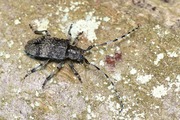Підтримуємо Вільну Україну
 We Support Free Ukraine
We Support Free Ukraine

Biodiversity Map
Taxa

-
Arthropodaphylum
Click to switch
to select orders
and filters > -
Hexapodasubphylum
Click to switch
to select orders
and filters > -
Insectaclass
Click to switch
to select orders
and filters > -
Coleopteraorder
Click to set
as the main taxon
and as a base
← of the left panel > -
Polyphagasuborder
Click to set
as the main taxon
and as a base
← of the left panel > -
Cucujiformiaseries
Click to set
as the main taxon
and as a base
← of the left panel > -
Chrysomeloideasuperfamily
Click to set
as the main taxon
and as a base
← of the left panel > -
Cerambycidaefamily
Click to set
as the main taxon
and as a base
← of the left panel > -
Lamiinaesubfamily
Click to set
as the main taxon
and as a base
← of the left panel > -
Acanthoderinitribe
Click to set
as the main taxon
and as a base
← of the left panel > -
Oplosiagenus
Click to set
as the main taxon
and as a base
← of the left panel >
species:
Oplosia cinerea
PL
YES
name status: valid name
BioMap ID: 1023444
taxon code: 4167
taxonomy checked: YES
Data on distribution in Poland

Statistics
- Records: 326
- Publications: 63
- Collections: 23
- Publication authors: 45
- Illustrations (iconography): 1
- Photos (specimen/observation): 3
Taxon description
Gatunek europejski, rozmieszczony w środkowej części kontynentu, docierający na północ do Danii i południowych prowincji Fennoskandii, notowany także z północnych Włoch, Azji Mniejszej i Kaukazu. W Polsce jest sporadycznie i nielicznie spotykany, głównie na terenach nizinnych i podgórzach. Całkowity rozwój od jaj do ukazania się imago trwa co najmniej dwa lata. Postacie dojrzałe ukazują się w maju i przeżywają do lipca. W przyrodzie są na ogół bardzo rzadko spotykane, gdyż nie odwiedzają kwiatów i prowadzą skryty tryb życia. Przebywają na materiale żywicielskim, jakim jest nie okorowane, wilgotne, przegrzybiałe drewno drzew liściastych, zwłaszcza lip — Tilia L.; poza tym jako drzewa łęgowe tego chrząszcza wymieniano buk — Fagus L., wierzby — Salix L., jarząba pospolitego — Sorbus aucuparia L. i leszczynę — Corylus avellana L. Larwy żerują głównie w leżących na ziemi gałęziach o średnicy 3-15 cm. Drążą początkowo w bielu, następnie w górnej warstwie drewna, nieregularne, zlewające się ze sobą chodniki. Po przezimowaniu starsze larwy sporządzają wczesną wiosną komorę poczwarkową, przeważnie w bielu, rzadziej w korze.
Illustrations
... browse
 Oplosia
Oplosiacinerea
External data sources
- Ostatnie rekordy
-
1148663
 ⊡
⊡ Cerambycidae: Oplosia cinerea, PL, Dolny Śląsk, Przedgórze Sudeckie, Wzgórza Niemczańsko-Strzelińsk, dolnośląskie, Ząbkowice Śląskie, Ziębice, Henryków, UTM XS41 (Gerhardt 1891a, Gerhardt 1910d)
Cerambycidae: Oplosia cinerea, PL, Dolny Śląsk, Przedgórze Sudeckie, Wzgórza Niemczańsko-Strzelińsk, dolnośląskie, Ząbkowice Śląskie, Ziębice, Henryków, UTM XS41 (Gerhardt 1891a, Gerhardt 1910d) -
1148408
 ⊡
⊡ Cerambycidae: Oplosia cinerea, PL, Puszcza Białowieska, Białowieski P.N., podlaskie, Hajnówka, Białowieża, UTM FD94, 1983 (Gutowski et Kubisz 1995)
Cerambycidae: Oplosia cinerea, PL, Puszcza Białowieska, Białowieski P.N., podlaskie, Hajnówka, Białowieża, UTM FD94, 1983 (Gutowski et Kubisz 1995) -
1148407
 ⊡
⊡ Cerambycidae: Oplosia cinerea, PL, Puszcza Białowieska, Białowieski P.N., podlaskie, Hajnówka, Białowieża, UTM FD94, 1983 (Gutowski et Kubisz 1995)
Cerambycidae: Oplosia cinerea, PL, Puszcza Białowieska, Białowieski P.N., podlaskie, Hajnówka, Białowieża, UTM FD94, 1983 (Gutowski et Kubisz 1995) -
1148314
 ○
○ Cerambycidae: Oplosia cinerea, PL, Puszcza Białowieska, Puszcza Białowieska, UTM FD84, 1983 (Gutowski et Kubisz 1995)
Cerambycidae: Oplosia cinerea, PL, Puszcza Białowieska, Puszcza Białowieska, UTM FD84, 1983 (Gutowski et Kubisz 1995) -
1148075
 ×
× Cerambycidae: Oplosia cinerea, RU, Komsomolsk (Lentz 1879)
Cerambycidae: Oplosia cinerea, RU, Komsomolsk (Lentz 1879) -
1147353
 ×
× Cerambycidae: Oplosia cinerea, RU, 1874, leg. H. Bercio, coll. Museum Königsberg (Bercio et Folwaczny 1979)
Cerambycidae: Oplosia cinerea, RU, 1874, leg. H. Bercio, coll. Museum Königsberg (Bercio et Folwaczny 1979) -
1147352
 ×
× Cerambycidae: Oplosia cinerea, RU, 1857, leg. F.L. Lentz, coll. Museum Königsberg (Bercio et Folwaczny 1979)
Cerambycidae: Oplosia cinerea, RU, 1857, leg. F.L. Lentz, coll. Museum Königsberg (Bercio et Folwaczny 1979) -
1147351
 ×
× Cerambycidae: Oplosia cinerea, RU, Komsomolsk, 1857, leg. F.L. Lentz, coll. Museum Königsberg (Bercio et Folwaczny 1979)
Cerambycidae: Oplosia cinerea, RU, Komsomolsk, 1857, leg. F.L. Lentz, coll. Museum Königsberg (Bercio et Folwaczny 1979) -
1147350
 ×
× Cerambycidae: Oplosia cinerea, RU, 1868, leg. G. Czwalina (Bercio et Folwaczny 1979)
Cerambycidae: Oplosia cinerea, RU, 1868, leg. G. Czwalina (Bercio et Folwaczny 1979) -
1147349
 ×
× Cerambycidae: Oplosia cinerea, RU, 1835, leg. (Bercio et Folwaczny 1979)
Cerambycidae: Oplosia cinerea, RU, 1835, leg. (Bercio et Folwaczny 1979) - ... more
- Powiązane publikacje
-
Marczak D. 2020. Chrząszcze saproksyliczne głównych typów siedliskowych Puszczy Kampinoskiej - studium faunistyczno-ekologiczne. Prace Instytutu Badawczego Leśnictwa. Rozprawy i Monografie. Sękocin Stary. 285 pp.
 Show records
Show records -
Gutowski J.M., Kubisz D., Sućko K., Komosiński K., Mazur M.A., Pacuk B., Greń Cz. 2020a. Chrząszcze (Coleoptera) Suwalskiego Parku Krajobrazowego. Monografia. Instytut Badawczy Leśnictwa, Sękocin Stary, 391 pp.
 Show records
Show records -
Szmidla H., Jabłoński T., Plewa R. 2019b. Roślina pasożytnicza Viscum album L. - jemioła pospolita. [In:] Krótkoterminowa prognoza występowania ważniejszych szkodników i chorób infekcyjnych drzew leśnych w Polsce w 2019 roku. Instytut Badawczy Leśnictwa, Sękocin Stary. pp. 83-85.
 Show records
Show records -
Szmidla H., Tkaczyk M., Plewa R., Tarwacki G., Sierota Z. 2019a. Impact of common mistletoe (Viscum album L.) on Scots pine forests – a call for action. Forests, 10(847):15.sty.
 Show records
Show records -
Szczepański W.T., Herczek A. 2019. Kózkowate (Coleoptera: Cerambycidae) wybranych obszarów Natura 2000 w dolinie górnej Odry. Monographs of the Upper Silesian Museum, 11.
 Show records
Show records - ... more








